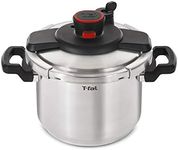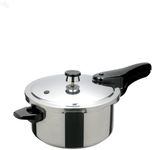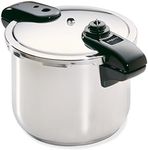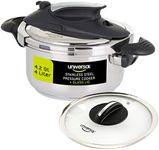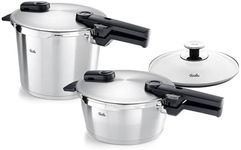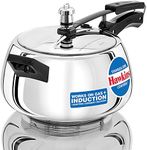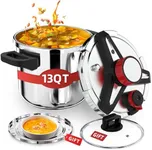Buying Guide for the Best Stainless Steel Pressure Cookers
Choosing the right stainless steel pressure cooker can make a big difference in your cooking experience. Pressure cookers are great for saving time and energy while preparing meals, and stainless steel models are known for their durability and resistance to rust and stains. When selecting a pressure cooker, it's important to consider several key specifications to ensure you get the best fit for your needs. Here are the main specs to look at and how to navigate them.CapacityCapacity refers to the volume of food the pressure cooker can hold, usually measured in liters or quarts. This is important because it determines how much food you can cook at once. Small cookers (2-4 liters) are suitable for singles or couples, medium cookers (5-7 liters) are ideal for small families, and large cookers (8 liters and above) are best for larger families or batch cooking. Choose a capacity based on the number of people you typically cook for and the types of meals you prepare.
Material QualityMaterial quality is crucial for durability and safety. High-grade stainless steel is preferred because it resists rust, stains, and corrosion, and it doesn't react with acidic foods. Look for pressure cookers made from 18/10 stainless steel, which indicates 18% chromium and 10% nickel, providing excellent strength and shine. Ensure the cooker has a thick base for even heat distribution and to prevent food from burning.
Pressure SettingsPressure settings determine how much pressure the cooker can build up, affecting cooking times and the types of food you can prepare. Most pressure cookers have multiple settings, typically ranging from low (6-8 psi) to high (12-15 psi). Low pressure is suitable for delicate foods like vegetables and fish, while high pressure is better for tougher meats and beans. Choose a cooker with adjustable pressure settings to give you more flexibility in your cooking.
Safety FeaturesSafety features are essential to prevent accidents and ensure the cooker operates correctly. Look for features like pressure release valves, locking lids, and safety indicators. These features help manage the pressure inside the cooker and prevent it from opening until it's safe. A cooker with multiple safety mechanisms is preferable, especially if you're new to pressure cooking.
Ease of Use and CleaningEase of use and cleaning can significantly impact your overall experience with the pressure cooker. Features like intuitive controls, clear pressure indicators, and easy-to-read manuals make the cooker more user-friendly. Additionally, consider how easy it is to clean the cooker. Models with dishwasher-safe parts and a simple design without too many nooks and crannies are easier to maintain. Choose a cooker that fits your comfort level with operating and cleaning kitchen appliances.
Compatibility with Heat SourcesCompatibility with heat sources refers to whether the pressure cooker can be used on different types of stoves, such as gas, electric, induction, or ceramic. Not all stainless steel pressure cookers are compatible with all heat sources. If you have an induction cooktop, ensure the cooker is induction-compatible. Check the manufacturer's specifications to confirm compatibility with your stove type.
